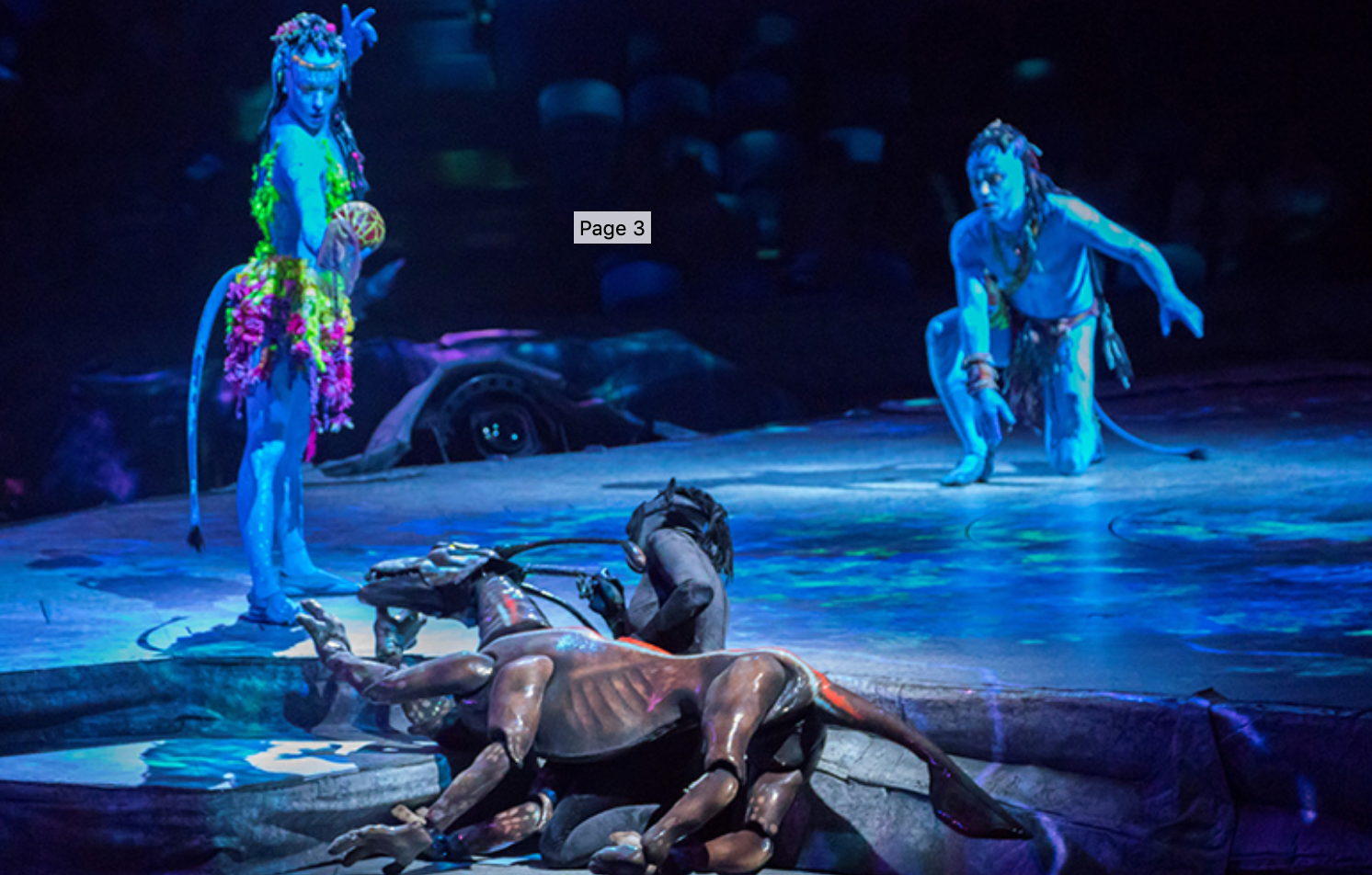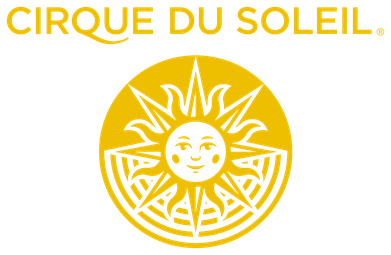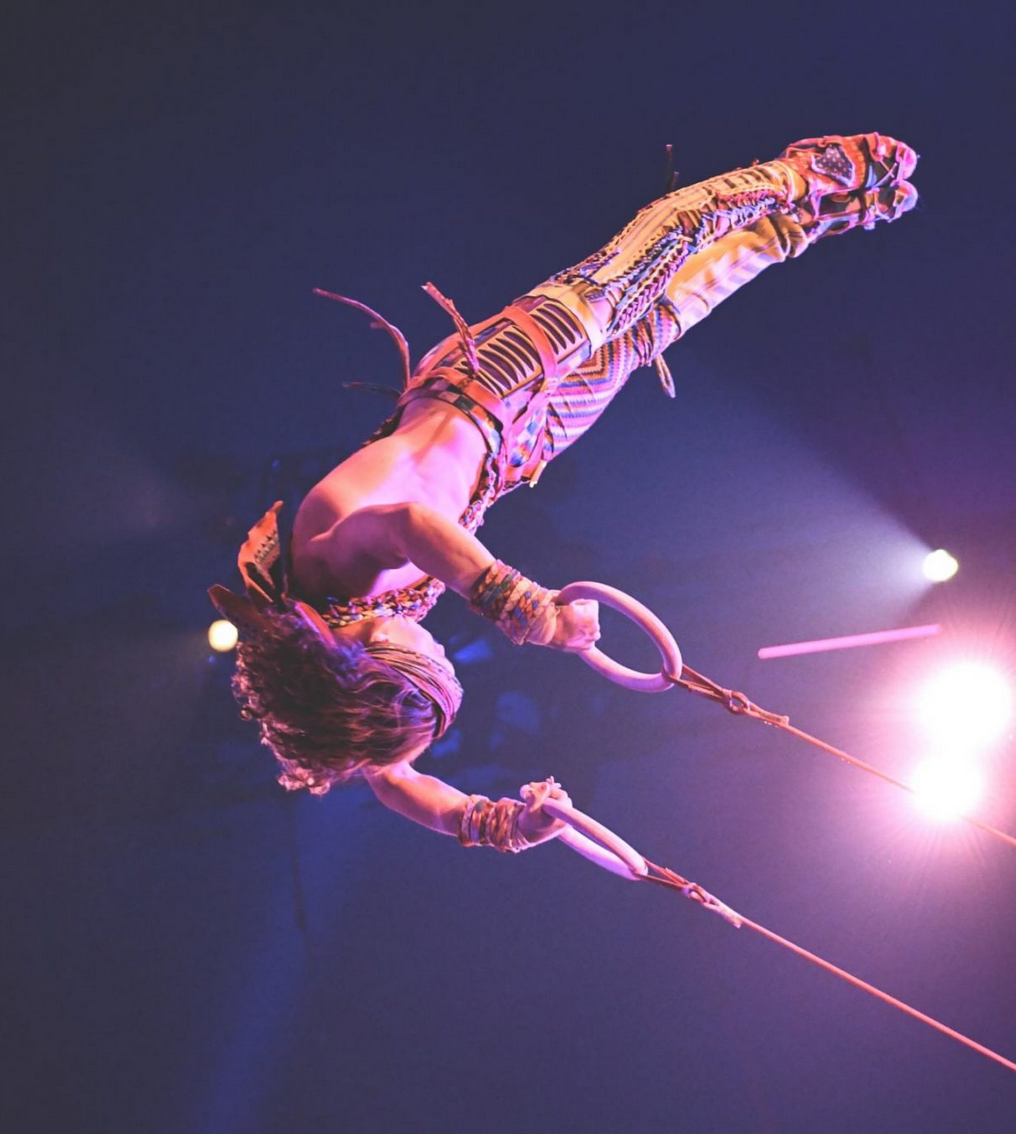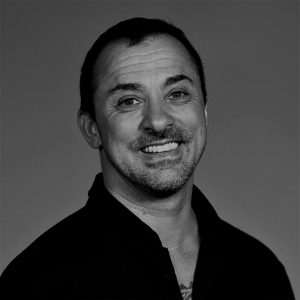
I’ll never forget the first time I experienced Cirque du Soleil. It was 1992. I was in Zurich, studying photography at the time, and decided to dedicate part of my semester to a “Behind the Scenes” photo documentary of the Swiss National Circus – Circus Knie.
Little did I know that my photo project coincided with a special event: Knie had invited Cirque to tour with them that year. The show was called Knie Presents Cirque du Soleil. It was an enigmatic mix of traditional Circus and something revolutionary… a theatrical, dreamy, magical form of circus Swiss audiences had not known existed up until that moment.
Photographing rehearsals as well as performances, I was mesmerized. For a month, while this co-production performed in Zurich, I would jump out of bed every morning, barely taking time to eat my breakfast. I would rather run out the door as quickly as possible, to be able to be backstage again.
Once I would arrive at the Big Top, I would respectfully stay in the background, every so often snapping a picture, first watching the regular Circus Knie rehearsals. However, I would be giddy with anticipation to get my daily fix of Cirque rehearsals. I would drink in the colorful costumes, the uplifting music, the gentle yet playful and powerful acrobatic performances. Every show I saw that month in Zurich was a huge success – and I went to see them all. Every single evening.
Poetry was being redefined as Cirque du Soleil performed its way into Swiss people’s hearts. It also claimed a firm place in my heart. This was the beginning of a life-long love affair. Almost everyone on this planet has heard of Cirque du Soleil. Only few are aware of the details of its early beginnings though.
The following brief history does not claim to be complete. Rather, I want to take this moment to give a rough overview, to celebrate an entertainment giant which has touched many of our lives throughout its brilliant existence. Simply put, it all began with two men – Guy Laliberte and Gilles Ste-Croix – and their vision. The Canadian artist Guy Laliberte travelled as far as Europe and performed with many street performer groups throughout his teenage years.
In the 1960’s and 70’s this led to the creation of three performance collectives. In one of those collectives, Gilles Ste-Croix realized that incorporating circus skills into theatrical performance opened up a whole new world of possibilities of reaching out and communicating with the audience. Guy Laliberte and Gilles Ste-Croix met for the first time in 1979 in Baie-Saint-Paul, where Gilles managed a youth hostel called Le Balcon Vert. They started working together and Gilles had a huge influence on Laliberte.
Ste-Croix jokingly puts it this way:
“I always say Guy Laliberte founded Cirque du Soleil, but I founded Guy Laliberte. He’s the father of Cirque. I’m the grandfather.”
At Le Balcon Vert, Guy was reunited with Daniel Gauthier, a former school buddy. Daniel would become Cirque’s chief administrator and Laliberte’s partner from 1987-2001. Shortly after the arrival of Guy, Ste-Croix introduced the idea of using the talent wandering through Le Balcon Vert to form a troupe that would perform theater on stilts.
In 1980, the newly formed troupe Les Echassiers De La Baie managed to secure government funding. Les Echassiers charmed their audiences and were making a profit by the end of 1981. To fortify the business side of their vision, Laliberte and Ste-Croix also set up the non-profit holding company Le Club des Talons Haut. Inspired by their creative success, Laliberte and Ste-Croix decided to organize a street performance festival which would later be considered the “embryo of Cirque du Soleil”.
The festival was called Le Fete Foraine. It took place in 1982 and ran successfully for a week. A second and third festival in the following two years ran for ten days each. Many street performances were featured, as well as workshops for aspiring circus artists.
It was a melting pot of promising talent as well as a meeting ground for visionaries. René Dupéré, who would end up writing most of Cirque du Soleil’s music, was one festival participant. Guy Laliberte in his own words is a man with a good hand for creative business:
“I had a business goal always. I knew it took discipline to make things happen, even when I did projects at art school. I think it’s a quality I have: I’m capable of finding a balance between business and creativity, and seeing how creativity can grow out of that balance.”
Watching the success and vibrant energy of Le Fete Foraine, Laliberte realized he had all he needed for a homegrown circus right there within his reach. His opportunity to bring it all underneath one Big Top came in 1984, as part of the Quebec government’s celebration of Canada’s discovery by Jacques Cartier. Laliberte says he was watching the sunset on a beach in Hawaii when he first thought about forming a circus – so he named his circus; Cirque du Soleil.
The very first audience gasping at the beauty of a Cirque du Soleil performance was aptly located in Gaspe, a small town in Quebec. It was a learning process for the whole troupe, with many little accidents and organizational nightmares. For their very first show in Gaspe they broke their own tent and had to borrow another one.

Only in the fourth location did they start using their own Big Top. Even though audiences loved them, they finished their first year of touring Quebec with only 60’000 Canadian dollars in the bank. They were technically bankrupt. With lots of struggling, Cirque managed to get one more year of funding from the government. The first thing Guy Laliberte did was go to Europe to buy a bigger tent. The previous one had only seated 800 people. It wasn’t enough to make a good profit. The new blue-yellow Big Top provided space for 1’500 people. In 1984 Le Grand Tour de Cirque du Soleil performed in ten Quebec cities for the celebrations.
In 1985 the show started with three Quebec cities, then for the very first time ventured outside its home province into the neighboring Ontario. Now, for the first time the show simply called itself Cirque du Soleil. Founder Guy Laliberte gave Quebec its very first own circus. From then onwards, the international saga began. Over the next 8 years, Cirque toured with various shows. First in Canada was La Magie Continue.
They performed at the LA Festival and continued to tour to other US cities with We Reinvent the Circus. “Wherever Cirque du Soleil went, the result was the same: the performances sold out and the critics raved.”
1990 saw the world premiere of Nouvelle Experience in a brand-new Big Top that seated 2’500 people. Cirque broke its own ticket sale records.The same year brought another major next step forward for Cirque. We Reinvent the Circus was staged in London and Paris. These first ten years also represented an intense time of learning and growth for Cirque and its organizers.
Relationships were built with established circus companies like Roncalli in Germany, and Knie in Switzerland. Especially the Swiss family Knie, were immensely helpful. Know-how was exchanged and Knie even went so far as to send their Tent Master to the Cirque team, for some essential training in maintenance and set-up.
Franco Dragone came to work for Cirque du Soleil in the mid 80’s. He says he was delighted at the opportunity “because I wanted to bring theater to the circus.” He directed all of Cirque’s shows from Nouvelle Experience to Dralion. Franco introduced a new approach to character. He worked with performers to better understand their impact on stage apart from their acrobatic expertise. His high-quality artistic vision not only made Cirque profitable by 1990, but also allowed it to create new shows.
As I mentioned in the introduction to this brief history, in 1992, Circus Knie and Cirque du Soleil collaborated for a touring show performing in over sixty major Swiss cities, called Knie presents Cirque du Soleil. While the tour in Switzerland was an instant success, Cirque also had its first adventure in Asia. With Fascination, a collage of past shows, they made a name for themselves in Japan and opened the doors to the Asian market.
In 1992, Saltimbanco premiered in Montreal. Saltimbanco was a milestone and instant classic in Cirque history. The show retired in 2012, after 20 years of successfully touring around the world. In the 1990’s Cirque gathered up speed and embarked on tours in Canada, the United States, Europe, Africa and Asia with a multitude of existing and new shows – Alegria, Quidam, Dralion, were again major milestones in Cirque’s repertoire.
With Mystere, Cirque opened its first resident show at Treasure Island in Las Vegas in 1993. Another even more ambitious project was the permanent show O, at the Bellagio in Las Vegas.
“This production is Cirque’s first aquatic show and another very important milestone in company history. With this show, Cirque was now known internationally.”
O has so far broken all ticket sales records. The show has performed to a full house ever since its premiere in October 1998. Another permanent show, La Nouba opened its doors at the Orlando Disney Resort in the same year. Franco Dragone says about the artistic development of each production: “Our sources of inspiration for each show are always threefold: social and political life, our artistic heritage and quotidian lives, and the institutional life of Cirque du Soleil.”
With O, Cirque reached a whole new level of technological challenges. A water-based theater needed an immense amount of maintenance and safety features. For Franco, it was a first step that led to him creating Le Reve and later The House of Dancing Water, the Han Show, the Dai Show, and La Perle after he left the community of Cirque du Soleil in 1999.
Laliberte remembers that the key to working with water was letting it dictate its own terms.
“Your first reflex is to go against the rhythm of water. But by listening you come to realize that water wants you to work at its rhythm. That realization helped us come up with something wholly original – it was a creative stimulus of the first order.”
From 2000 to now, many of the older shows retired. But many new shows followed. Varekai, Corteo, Delirium, Kooza, OvO, Banana Shpeel, Totem, Zarkana, Michael Jackson-The Immortal World Tour, Amaluna, Kurios, Toruk – The First Flight, Luzia, Septimo Dia, Volta, Crystal, Bazaar and the latest addition, the new Alegria. Plus, coming soon, Axel and Messi 10. (The tours in bold are still travelling around the world, the others have retired).
In good Cirque du Soleil tradition, each touring show always celebrates its world premiere in Montreal. More permanent shows were opened: Zumanity, Ka, The Beatles Love, Chris Angel-Believe, Viva Elvis, Michael Jackson: One, and soon R.U.N. in Las Vegas; Wintuk in New York; Zaia in Macau; Zed in Tokyo; Iris in LA., Joya in Riviera Maya, Mexico; Paramour in Hamburg; and X – The Land of Fantasy in Hangzhou, China. (Again, shows that are still active are shown in bold print).

In 2015, with Guy Laliberte leaving Cirque, an era came to its end. TPG Capital, Fosun Industrial Holdings, and Caisse de Dépôt et Placement du Québec purchased 90% of Cirque du Soleil. Thankfully, its shows are still running strong. However, with the original founders and creatives gone, Cirque – now a proud 35 years young – is, like everything around and inside of us, gradually and unavoidably changing… and exploring new directions…
What made Cirque du Soleil so attractive to its audiences? Each show was a combination of circus styles from around the world with a storyline, a central theme, live music, a theatrical, character-driven approach, the absence of performing animals, theater elements like light, sound and special effects, top of the line acrobats, and artists from around the globe. Artistic Director Guy Caron tried to explain the attraction:
“To me the big secret of Cirque du Soleil is that we created shows like a film. Cirque is like cinema: you edit it together to create drama, and to allow people to enter completely into the experience, like you do into a film screen. You enter into the experience, and forget everything else.”
Pierre Parisien points out the timelessness and power of the human emotions each show explores. “In Alegria for example Franco found a devil and an angel in all of us. Perhaps Alegria has lasted so long because with its mix of old and new, power and freedom, darkness and light – it is timeless.”
In every show, Cirque uses the same opening. “Whatever the show: people coming in from the street and becoming extraordinary.” This conveys a beautiful and uplifting message to the audience coming in to escape their daily monotony: We, too, can be extraordinary.
Resources:
The Importance of Kindness in Entertainment


Liam Klenk was born in Central Europe and has since lived on four continents. Liam has always been engaged in creative pursuits, ranging from photography and graphic design, to writing short stories and poetry, to working in theatre and shows. In 2016, Liam published his first book and memoir, 'Paralian'.
Read Full Profile© 2021 TheatreArtLife. All rights reserved.

Thank you so much for reading, but you have now reached your free article limit for this month.
Our contributors are currently writing more articles for you to enjoy.
To keep reading, all you have to do is become a subscriber and then you can read unlimited articles anytime.
Your investment will help us continue to ignite connections across the globe in live entertainment and build this community for industry professionals.